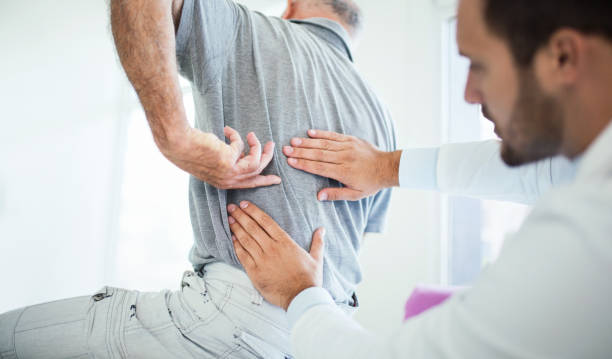Body movement Therapy
Embracing the Integrative Systems Model for Recovery
Pain can have a significant impact on our life, limiting our capacity to work, engage in enjoyable activities, and even our mental well-being. Finding efficient solutions for pain relief is critical for recovering control of our lives and enhancing our general well-being. One promising method is the Integrative Systems Model (ISM). This comprehensive concept acknowledges that pain is more than just a bodily sensation; it is influenced by biological, psychological, and social variables.
The ISM approaches pain recovery in a comprehensive manner, taking into account all dimensions of pain. It recognizes that pain is a complex combination of factors and seeks to address each of them in order to create a recovery process. Understanding pain holistically allows us to better personalize treatment programs to each individual’s specific needs.
The Integrative Systems Model: A Holistic Approach
The Integrative Systems Model (ISM) explains how biological, psychological, and social factors affect pain recovery. It views pain as an experience and emphasizes treating all aspects of a person’s life to recover fully.
The ISM defines pain as a sign of body-mind disharmony. By rectifying these imbalances, the ISM intends to promote harmony and recuperation. This comprehensive approach understands that physical trauma, mental distress, and social support affect pain.

The role of emotions in pain recovery
Emotions play an important part in pain healing, and the ISM recognizes the need of addressing emotional well-being during the therapy process. Chronic pain can often trigger sentiments of irritation, anger, and grief, exacerbating the pain experience. By addressing these emotions, people can obtain a better knowledge of the underlying reasons of their pain and create effective pain management and coping skills.
Physical and emotional well-being are inextricably intertwined, and the ISM emphasizes the importance of addressing both at the same time. Techniques like cognitive-behavioral therapy (CBT) and mindfulness-based stress reduction (MBSR) can help people develop healthy coping mechanisms and minimize the burden of pain in their life.
Addressing physical factors in pain recovery
While pain is more than just a physical experience, addressing physical causes is an important element of the rehabilitation process. The ISM understands the need of identifying and correcting any physical imbalances that may contribute to pain. This can include physical therapy, medication management, and alternative therapies including acupuncture and chiropractic care.
By targeting physical causes, the ISM hopes to decrease pain and improve general physical function. This may include strengthening weak muscles, improving posture and alignment, and correcting any structural abnormalities that may be causing pain. It also urges people to take an active role in their recovery by exercising regularly and adopting healthy lifestyle practices that promote physical well-being.
The importance of nutrition and lifestyle in pain management
Nutrition and lifestyle choices can have a big impact on pain levels and overall health. The ISM emphasizes the significance of living a healthy lifestyle and implementing dietary adjustments to aid with pain relief. A diet high in anti-inflammatory foods, such as fruits, vegetables, and omega-3 fatty acids, helps reduce inflammation and pain.
In addition to nutrition, the ISM encourages people to undertake lifestyle changes that benefit their overall health. This may include regular exercise, stress management, and enough relaxation and sleep. The ISM’s holistic approach, which treats both physical and lifestyle aspects, strives to deliver a more comprehensive and successful pain rehabilitation process.

Mind-body techniques for pain relief
Mind-body techniques can be effective tools for pain relief, and the ISM uses a variety of approaches to address the mind-body link. Meditation, deep breathing exercises, and guided imagery can help people relax and reduce tension, thereby relieving pain.
The ISM understands that the mind and body are inextricably linked, and that by addressing both components, people can get better pain management results. Individuals who incorporate mind-body approaches into their treatment plan can learn skills to handle pain more effectively and improve their general well-being.
The benefits of exercise in pain recovery
Exercise is an essential part of pain recovery, and the ISM emphasizes its significance in the healing process. Regular physical activity can help strengthen muscles, increase flexibility, and relieve discomfort. It also stimulates the release of endorphins, which are natural pain relievers generated by the body.
The ISM acknowledges that exercise should be adjusted to each individual’s unique requirements and abilities. It encourages people to collaborate with healthcare specialists to design a safe and effective fitness regimen for their condition. Individuals who incorporate regular exercise into their rehabilitation process can benefit from improved pain management and general physical function.
Utilizing complementary therapies for pain relief
Complementary therapies can be useful supplements to established pain management strategies, and the ISM recognizes their potential advantages. Acupuncture, massage therapy, and herbal medicine are all effective ways to relieve pain, reduce inflammation, and promote relaxation.
The ISM urges people to try these complementary therapies as part of their pain-relief journey. it is critical to consult with experienced practitioners and ensure that these therapies are administered alongside evidence-based treatments. Individuals who combine standard and alternative approaches can benefit from a more holistic and well-rounded pain rehabilitation process.

The role of social support in pain recovery
Social support is crucial in pain treatment, and the ISM understands the need of building a solid support network. Chronic pain can often cause emotions of isolation and loneliness, exacerbating the pain experience. Individuals who surround themselves with supportive and empathetic people can achieve greater emotional well-being and pain management outcomes.
The ISM recommends support groups, therapy, and other social services to help chronic pain sufferers. Connecting with others who have had similar experiences can bring insights, practical solutions, and emotional support that can greatly enhance pain rehabilitation.
Conclusion
Pain recovery, in my experience, is a complex and multifaceted process that requires a comprehensive approach. The Integrative Systems Model (ISM) has caught my attention as it offers a promising framework that addresses pain from a holistic perspective. By considering the biological, psychological, and social factors that contribute to pain, the ISM aims to provide a more effective and tailored recovery process.
I believe that personalized care, emotional well-being, physical factors, healthy lifestyle habits, mind-body techniques, regular exercise, complementary therapies, and social support can improve pain management and well-being.
In my view, by embracing the transformative potential of the Integrative Systems Model, individuals can regain control over their lives and embark on a journey towards pain recovery.
Trusted Health, Wellness, and Medical advice for your well-being


